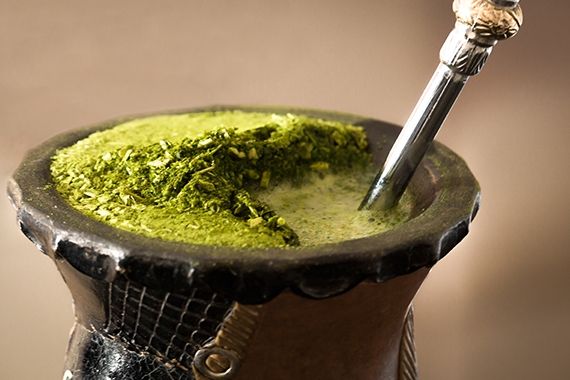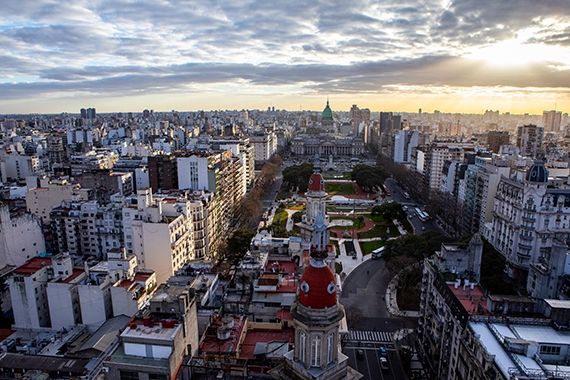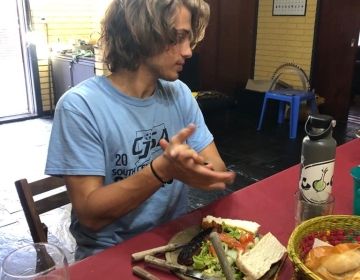EAT, DRINK, EXPLORE: BUENOS AIRES

BEST FOOD TO EAT IN BUENOS AIRES
It’s true, Argentina produces some of the best beef on earth. But given cattle’s impact on our climate, I’d prefer to steer you toward another Argentinian delight: alfajores. Like the macaron in Paris, alfajores are featured in every bakery case in Buenos Aires. Two delicate buttery cookies are joined with a generous swath of dulce de leche, rolled in coconut flakes, and coated in powdered sugar. Dulce de leche is a creamy caramel, delicious enough to eat by the spoonful. Paired with shortbread cookies, coconut, and powdered sugar? Heaven.

BEST DRINK IN BUENOS AIRES
While coffee is popular in Argentina, nothing matches the yerba mate tea craze. Dried yerba mate leaves are steeped in a hollowed-out gourd and sipped through a long metal straw called a bombilla. Yerba mate is said to have the health benefits of tea, the caffeine content of coffee, the emotional kick of chocolate, and most of the vitamins and minerals needed by the human body. It’s also known to promote friendship and community because drinking mate can be a group activity. The server, or cebador, prepares the mate then passes it around the circle for everyone to sip. As for the flavor of yerba mate? While it most resembles that of green tea, it can be quite bitter and take some getting used to.

BEST PLACE TO EXPLORE IN BUENOS AIRES
There are so many reasons to include Palacio Barolo on your list of must-sees in Buenos Aires. First and foremost is the view from the lighthouse at the top, where you can literally see all the way to Uruguay on a clear day. Second, and equally impressive, is the jaw-dropping architecture. The building was created by an Italian immigrant at the turn of the 20th century and based entirely on one of the world’s great works of literature: Dante’s Divine Comedy. Like the poem, the building’s 22 floors are divided into three parts: Hell, Purgatory, and Heaven. Each section is filled with overt architectural flourishes reminiscent of the section and best appreciated with the help of a guide.
Related Posts
There is no better way to get to know a culture than through its food
While I was a foodie long before I came to Buenos Aires, something about spending so much time alone in the city really sparked a new dimension to the way... keep reading
Bariloche - Buenos Aires Study Tour
Spring Block I - Bariloche Bariloche, in the province of Río Negro, Argentina, is situated in the foothills of the Andes mountains on the southern shores of Nahuel Huapi Lake... keep reading
Another Great Reason to Study Abroad in Buenos Aires
As if Buenos Aires’ didn’t have enough going for it – with its cultural largesse, tree-lined boulevards, fascinating history, world-famous beef, and passionate tango. Now this cosmopolitan city is playing... keep reading




